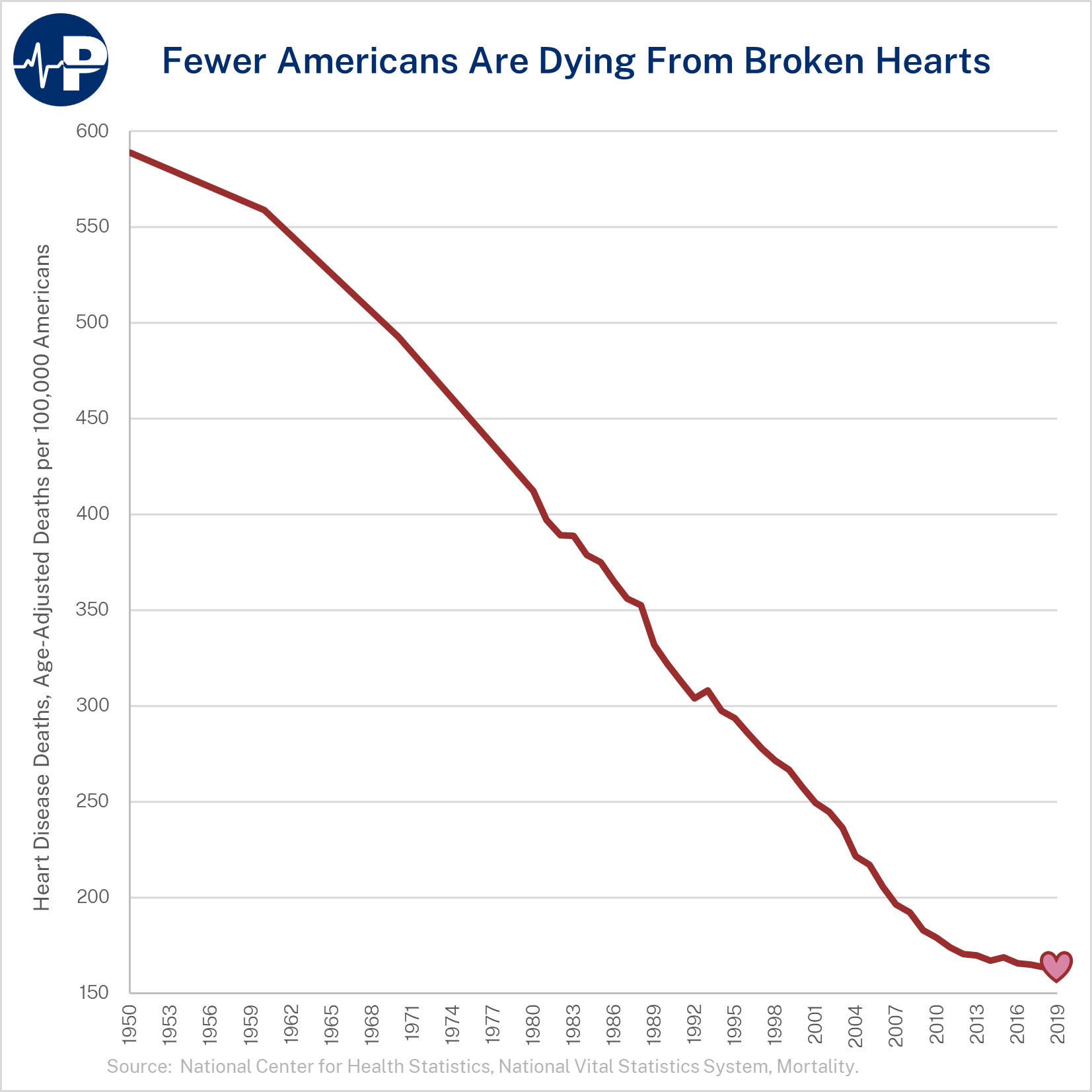The Pandemics and All-Hazards Preparedness Act expires on September 30. The law, which was originally enacted in 2006, organizes federal health preparedness and response efforts, focusing on public health security and bioterrorism preparedness. The reauthorization comes under heightened scrutiny following the COVID-19 pandemic. This policy brief details the law’s history, its efficacy during the COVID-19 pandemic, and considerations for Congress as it reauthorizes the law.
Key Takeaways
- In reauthorizing PAHPA, Congress should avoid issues outside the scope of preparedness and response.
- Congress should prioritize private sector solutions in addressing the Strategic National Stockpile and supply chain issues and enhance opportunities for the public-private partnerships that worked well during the pandemic.
- While CDC had multiple pandemic failures, Congress should resist the impulse to use PAHPA reauthorization to comprehensively reform the CDC. Congress should, outside the reauthorization process, authorize CDC in full for the first time in its history and refocus the agency on its core mission.
- Congress should account for newly created authorities in order to avoid duplication and waste and use reauthorization to streamline emergency responses and place guardrails around emergency powers.
PAHPA in Context
The Pandemic and All-Hazards Preparedness Act (PAHPA) was enacted in 2006.1 It amended the Public Health Service Act to “to improve the Nation’s public health and medical preparedness and response capabilities for emergencies, whether deliberate, accidental, or natural.” It authorized the establishment within the Department of Health and Human Services (HHS) of the Office of the Assistant Secretary for Preparedness and Response (ASPR)—recently retitled as the Administration for Strategic Preparedness and Response—and the Biomedical Advanced Research and Development Authority (BARDA) for the advanced research and development of medical countermeasures. Congress reauthorized PAHPA with bipartisan support in 2013 and 2019 (as the Pandemic All-Hazards Preparedness and Advancing Innovation Act).
PAHPA also reauthorized and consolidated many existing programs that were previously authorized to deal with emerging 21st-century threats, especially following 9/11 and the 2001 anthrax scare.2 Earlier statutes3 increased grants to states for public health preparedness; established a new assistant secretary position for public health emergency response; codified and expanded the Strategic National Stockpile (SNS) of countermeasures; and established funding streams for drugs, vaccines, and other treatments and countermeasures that might lack market incentives.
Problems in the federal pandemic performance have given rise to calls for legislative reforms. The Centers for Disease Control and Prevention (CDC), particularly, has come under significant scrutiny for its myriad failures. Similarly, the pandemic highlighted shortages in stockpiles of medical equipment and raised concerns about the nation’s medical supply chain.
PAHPA has typically enjoyed broad support. With the law expiring at the end of the fiscal year on September 30, lawmakers have an opportunity to address some of the concerns raised by the pandemic through the PAHPA reauthorization process. Nevertheless, time is too short to consider major legislative overhauls. Moreover, there have been several legislative and executive branch initiatives in response to the pandemic that changed the regulatory landscape.
What Does PAHPA Authorize?
The 2006 law established, codified, or expanded several federal agencies or programs. Below is a summary of some of the key activities and programs PAHPA oversees.
ASPR: ASPR coordinates the nation’s preparedness and response for disasters and public health emergencies.
The agency has eight offices, including:
BARDA: The agency supports, through federal funding, the development of vaccines, drugs, therapies, and diagnostic tools for public health medical emergencies. BARDA uses a public-private partnership model to incentivize the development of these medical countermeasures.
SNS: The SNS holds drugs, vaccines, medical products, and other countermeasures that can be deployed to states and localities in response to public health threats. Its contents are informed by the Public Health Emergency Medical Countermeasures Enterprise (PHEMCE).
HPP: The Hospital Preparedness Program (HPP) grants provide “health care system readiness” funding to hospitals and other health care entities. In FY2023, $240 million was appropriated to the program.4
PHEMCE: PHEMCE coordinates federal responses to emerging threats and infectious diseases, focusing on the availability of medical countermeasures. It interacts with other federal partners, including ASPR, the CDC, the Food and Drug Administration (FDA), the National Institutes of Health (NIH), and the Departments of Defense, Veterans Affairs, Homeland Security, and Agriculture.
PAHPA also authorizes CDC to administer PHEP cooperative agreements: Public Health Emergency Preparedness (PHEP) cooperative agreements fund state and local health departments for preparedness and response to public health threats. In FY 2022 over $561 million in PHEP grant funding was distributed to state and local health departments.5
Current Issues in Congress
Historically, PAHPA reauthorization has been bipartisan. In 2013, the House passed the reauthorized PAHPA by a vote of 370-28 while the Senate passed the law by unanimous consent. In 2019, the bill passed both houses of Congress by voice vote.
However, the current political climate has shifted greatly due, in part, to lawmakers’ differing assessments of the nation’s COVID-19 experience. PAHPA has had a more contentious path to reauthorization in the 118th Congress than in previous reauthorization.
Some commentators have argued that the reauthorization process is an opportunity to restrain federal overreach and the abuse of emergency powers that occurred during the pandemic. Others argue that reauthorization should be used to increase emergency powers and the funding and footprint of federal health authorities.
The CDC, for example, has come under justifiable scrutiny for its performance during the pandemic.6 While most of the agency’s functions are not governed by PAHPA, some view the reauthorization as an opportunity to reform the agencies that failed so demonstrably during the pandemic.
The Senate Health, Education, Labor, and Pensions (HELP) Committee recently came to an agreement on PAHPA reauthorization.7 The committee is slated to markup the bill on July 20.
Partisan disagreements are sharper in the House. Some members are advancing measures typically outside the purview of PAHPA, including measures that would address drug shortages and supply chains.9 Democrats have sought, with Republican opposition, to use reauthorization to broaden the FDA’s authority to address drug shortages.10 The House Committee on Energy and Commerce Subcommittee on Health released draft language for two bills and held a markup last week, the first official vote in either chamber.11 A full-committee markup was held on July 18. 12 The bills both passed on party-line votes in both the subcommittee and full committee.
What’s in the House and Senate Bills?
The House and Senate have each released or introduced PAHPA reauthorization language. The House reauthorization includes two bills, H.R. 4420 and H.R. 4421,13 while the Senate HELP Committee will markup S. 2333 on July 20th.14 What follows are key differences and relevant context.
House “clean” reauthorization: The House version is closer to a clean reauthorization of many of the core PAHPA agencies and makes fewer reforms to the underlying agencies. The House legislation gives more clarity to the role of ASPR, which was clouded in part by provisions enacted in the PREVENT Pandemics Act as part of the Consolidated Appropriations Act, 2023. Specifically, the legislation requires ASPR to coordinate the administration of the SNS and develop a diagnostic testing preparedness plan.
Notable Senate additions: The Senate bill would expand CDC surveillance of wastewater and would establish a new National Public Health Data Board. The data board would be used to inform CDC’s Situational Awareness Branch.15 The Senate bill would further a new program to fund at least 12 biocontainment laboratories and establish a voluntary no-fault reporting system for laboratory accidents involving toxins and biological agents (e.g., a lab leak).
The language includes policies to ease regulatory burdens for new medical countermeasures as well as measures to grant FDA increased authority over drug shortages. The drug shortage provisions are similar, although less aggressive, than measures Democrats are pushing in the House.
New programs in each: Each bill would expand BARDA authority by including language similar to the Disease X Act. It would require BARDA to identify and develop countermeasures for viruses with pandemic potential. The Senate language is more prescriptive.
Other legislation considered: Both chambers are considering policies outside of those typically within the PAHPA reauthorization.
In the House, measures to move up the date after which the CDC director must be Senate-confirmed, allow Congress to review emergency declarations, and increase public participation in CDC guidance were considered during markup.
Learning from COVID: What Should Congress Do?
The pandemic raised the profile of many of the agencies that would be reauthorized under PAHPA. BARDA played a significant role in developing vaccines during Operation Warp Speed.17 The SNS came under intense scrutiny for perceived failures to hold, procure, and distribute countermeasures needed during the crisis.18
Despite significant funding through the HPP, some hospitals strained under the weight of surges in COVID cases.
The CDC impeded testing capabilities at the outset of the pandemic by distributing a faulty test and prohibiting use of other privately developed, effective tests, causing efforts to combat the outbreak to fall behind.19 CDC’s reliance on faulty science in advancing guidance on masking, school closures, and social distancing led to unnecessary mandates and lockdowns.20
With the first PAHPA reauthorization post-COVID, Congress has an opportunity to address shortcomings in the nation’s emergency response infrastructure. Congress should maintain objectivity and avoid reactionary policies that overextend the federal footprint through inefficient and redundant programs and avoid the false narrative that insufficient federal public health resources were to blame for failures in the country’s response to the COVID-19 pandemic. The problems were failures of execution.
The federal government cannot prepare for every hypothetical public health threat.21 Instead, it should position itself to an adaptive response that incorporates public-private partnerships. Further, Congress should begin reforming major public health agencies and curtail redundant and duplicative programs. This means focusing federal resources on proven solutions that harness America’s innovative, free market private sector and engage those capabilities when unforeseen threats emerge.
Core Missions
Many of the pandemic failures occurred at the nation’s essential public health agencies. The CDC, in particular, plays a significant role in carrying out portions of PAHPA and repeatedly failed in its mission.
As we address in a forthcoming paper, CDC’s failures largely resulted from a lack of focus that left it unprepared for the pandemic and impeded its response.22 CDC is largely unauthorized by Congress. As a result, it has grown into a large agency with diverse centers and programs, many of which have little to do with its original mission of combating communicable infectious diseases. Some CDC programs are barely related to health at all.
We argue that Congress should, outside the PAHPA reauthorization process, authorize CDC in full and restore its focus to its core mission. The FY2023 appropriations act took a small step in the right direction. It required that the Senate confirm the CDC director (beginning in 2025) and outlined the director’s duties for the first time in the agency’s history. It also requires the director to submit a “CDC Strategic Plan” to Congress at least once every four years that will outline “a coordinated strategy to provide strategic direction and facilitate collaboration across the centers, institutes, and offices within the CDC.”23 Nevertheless, Congress should undertake a more comprehensive effort that examines all the CDC’s centers and programs, eliminating those that duplicate efforts in other agencies or are outside of CDC’s core competency, and refocus the agency on its core mission.
Implementing the vital reforms needed at the nation’s health public agencies to ensure an effective response to future emergencies deserves Congress’s full attention. PAHPA should not be used to expand those agencies, increase grant funding through those agencies, or increase their authority in unrelated matters.
Congress should avoid policies that are outside the purview of preparing for and responding to public health threats and emergencies. While the FDA has a role in emergency response, especially in the approval of needed countermeasures, the root causes of drug shortages predate the pandemic and are outside the scope of PAHPA. Drug pricing and supply chain policy should be considered outside the reauthorization process. As part of the normal reauthorization process, Congress should consider targeted reforms and amendments to PHEP grant funding that flows through the CDC under PAHPA. That could include riders to grant funding restricting the federal government from using such funding to promote mandates and lockdowns that are best left to local governments. Congress could also consider strengthening guardrails around public health emergency determinations with greater opportunity for congressional review.
Prioritize private sector solutions in addressing the Strategic National Stockpile and supply chain issues
The SNS was originally established to counter threats from adversarial nations, particularly as it related to anthrax and smallpox.24 Federal policymakers never intended for the SNS to equip every state in the event of an extended pandemic and viewed it as a temporizing tool that would allow the private sector time to ramp up to meet demand.25
Many stakeholders have focused on the failures of the SNS, the need for specific capabilities within the SNS, or even the need for separate, specialized stockpiles. But the pandemic experience showed that the SNS can be only a short-term mechanism that is part of a larger protocol.26
Reforms to the SNS should be focused on improving its capabilities and adaptability and should refrain from being overly prescriptive. Instead, increased engagement with the private sector should improve situational awareness ahead of public health emergencies so that regulatory barriers to rapid supply chain responses can be removed.
The pandemic demonstrated the value of PAHPA in promoting innovation through public-private partnerships. The statute created BARDA to use public-private partnerships to facilitate research and development of countermeasures against chemical, biological, radiological, and nuclear threats, including vaccines for pandemics. 27 Public-private partnerships formed the basis for Operation Warp Speed, which brought new vaccines for a novel disease to market in just 10 months, an unprecedentedly short time. Acknowledging the importance of private sector innovation and enhancing its role is crucial for combating future health emergencies.
Avoid redundancy between OPPRP and ASPR, BARDA and ARPA-H
In the 2023 Consolidated Appropriations Act (P.L. 117- 328), Congress partially enacted the PREVENT Pandemic Act, which took several steps that would have typically been addressed during PAHPA reauthorization. Those efforts, which did not receive committee consideration in the House of Representatives, should be open to amendment in this process.
P.L. 117-328 created the new OPPRP within the White House. While the OPPRP is meant to streamline pandemic responses, most of its functions are duplicative of existing functions at other agencies, particularly ASPR. This duplication may lead to unclear lines of authority and hamper an effective emergency response.
The potential for duplication and conflict increased because of the 2022 action by HHS Secretary Xavier Becerra elevating the existing Office of the Assistant Secretary for Preparedness and Response from a staff division to an operating division within HHS and renaming it the Administration for Strategic Preparedness and Response. ASPR is now a standalone agency alongside other HHS agencies such as CDC, FDA, and the Centers for Medicare and Medicaid Services, among others. The goal of this reclassification was to “allow ASPR to mobilize a coordinated national response more effectively and efficiently during future disasters and emergencies in close collaboration with its sister agencies.”28
P.L. 117-328 included a throwaway line to “prohibit redundancy” between OPPRP and ASPR. Yet, as the law is currently outlined, many of OPPRP’s efforts overlap with efforts currently undertaken by ASPR, particularly its role as co-chair of the PHEMCE. Congress should use the opportunity to, at the very least, clarify the mission of OPPRP and set out guidelines as to how it is meant to interact with existing authorities.
The FY2023 appropriations law also authorized a new independent agency within NIH, the Advanced Research Projects Agency for Health (ARPA-H). Its goal is to support “high-potential, high-impact biomedical and health research that cannot be readily accomplished through traditional research or commercial activity.”29 This overlaps significantly with BARDA’s mission and is beyond NIH’s core mission, which is to advance basic science.
Congress should ensure that BARDA and ARPA-H do not duplicate efforts or work at cross purposes. Both agencies seek to fill perceived gaps in applied sciences, although BARDA is specifically focused on medical countermeasures. Congress should ensure such efforts are streamlined through the appropriate agency to avoid duplication and wasteful spending on similar endeavors.
Conclusion
As lawmakers consider the reauthorization of PAHPA, they should view the lawmaking exercise as an opening salvo in restoring the nation’s public health infrastructure to their core missions. While lawmakers should refrain from expanding the scope of PAHPA beyond its original jurisdiction, Congress should pursue reforms that reduce redundancy, right-size government, and learn from the failures of the COVID-19 pandemic.






